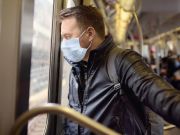'Flattening the Curve' Saves More Lives Than Thought

MONDAY, Sept. 14, 2020 (HealthDay News) -- Failure to "flatten the coronavirus curve" in the United States could lead to even more deaths than previously believed, a new study claims.
The researchers concluded that every six additional intensive care unit (ICU) beds or seven additional non-ICU beds filled by COVID-19 patients leads to one additional COVID-19 death over the following week.
"A spike in hospitalization naturally leads to more deaths, but these deaths may not only come from those who are hospitalized, but also from those who should have been hospitalized but were not," explained study co-author Anirban Basu. He's a professor of health economics at the University of Washington in Seattle.
The results match previous research showing that death rates rise as ICUs handle more COVID-19 patients, but the finding about non-ICU beds is new, according to the study authors.
U.S. Centers for Disease Control and Prevention data suggest that for every additional seven patients in non-ICU beds, about 0.5 deaths would be expected over the next seven days. But this study found that the number is higher.
"This may indicate that constraints in available capacity of non-ICU beds may have a spillover effect to non-hospitalized patients. In fact, the study found that the effect of non-ICU beds rises steadily as more and more non-ICU beds are occupied by COVID-19 patients," Basu said.
For example, when 20% of non-ICU beds are occupied by COVID-19 patients, an additional seven COVID-19 admissions to non-ICU beds will result in two additional COVID-19 deaths over the next seven days.
"Even when, say, 80% of non-ICU beds are still available, a further increase in COVID-19 admissions leads to significantly more numbers of deaths than what we would expect from only the hospitalized patients. This may be because the health care delivery within a hospital is not only driven by hospital beds but also personnel and COVID-specific supplies, which may be stretched thin," Basu said.
The findings show that efforts to flatten the curve through measures such as physical distancing and mask use are more important than keeping hospitals from becoming overwhelmed with COVID-19 patients, according to Basu.
Failure to flatten the curve before hospitals reach capacity kills more people than just those who end up in hospital beds, he said in a university news release.
"These results have very important implications as large numbers of students head back to schools and colleges across the nation, and resistance to public health measures continues to stymie efforts to reduce the number of infected," Basu said.
The study was published recently in the Journal of General Internal Medicine.
"Our study quantifies the relationship between COVID-19 deaths and COVID-19 hospitalizations using actual data," the study authors wrote in the report. "These estimates provide a better understanding of the projections of the COVID-19 pandemic in the USA, especially when states are gearing up to restart economic activities and provide important practice insights for hospitals in terms of assessment of hospital bed and ICU bed capacity and preparedness."
More information
The U.S. Centers for Disease Control and Prevention has more on COVID-19 protection.

The news stories provided in Health News and our Health-E News Newsletter are a service of the nationally syndicated HealthDay® news and information company. Stories refer to national trends and breaking health news, and are not necessarily indicative of or always supported by our facility and providers. This information is provided for informational and educational purposes only, and is not intended to be a substitute for medical advice, diagnosis, or treatment.

